How Media Brands Can Spice Up Their Marketing with Emojis 😂💯👏
Published on May 31, 2016/Last edited on May 31, 2016/5 min read
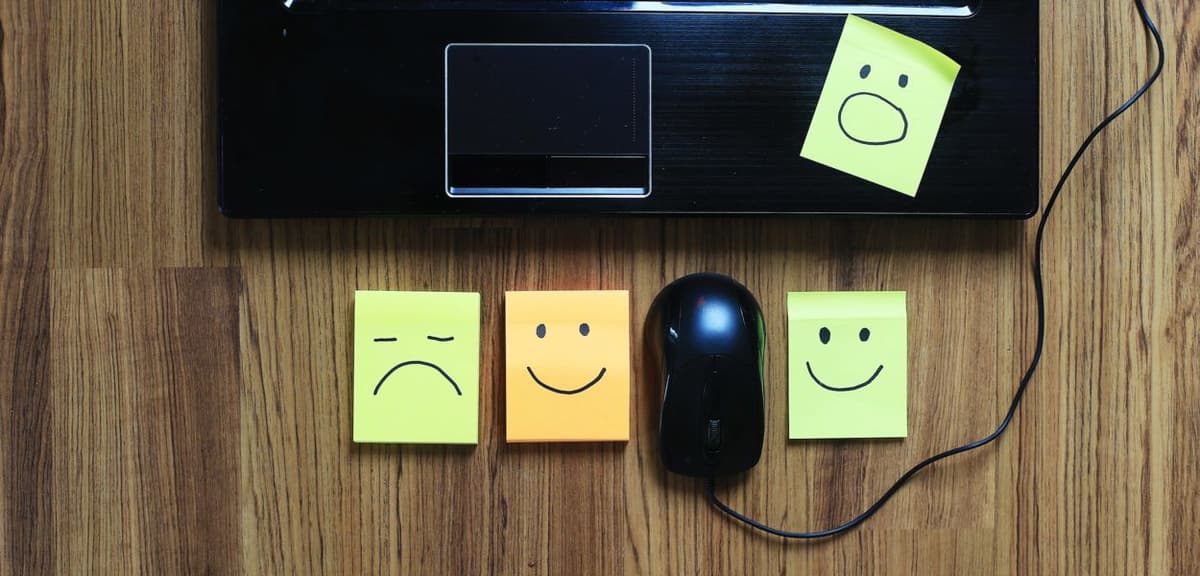

Team Braze
If you work in media and entertainment marketing then you’re likely no stranger to emojis and their rise 📈 in push notifications, email campaigns, social media, blogs, and even offline communications and promotions.
Appboy’s new research report takes a look at emoji trends in marketing messages, and media and entertainment marketers have really upped their use of these special characters. Just in the last year marketers across industries, using Appboy’s platform, sent tens of billions of emoji-based messages to over a billion of their customers, increasing use by 777% year over year. But will media and entertainment companies keep using emojis in campaigns at growing rates indefinitely?
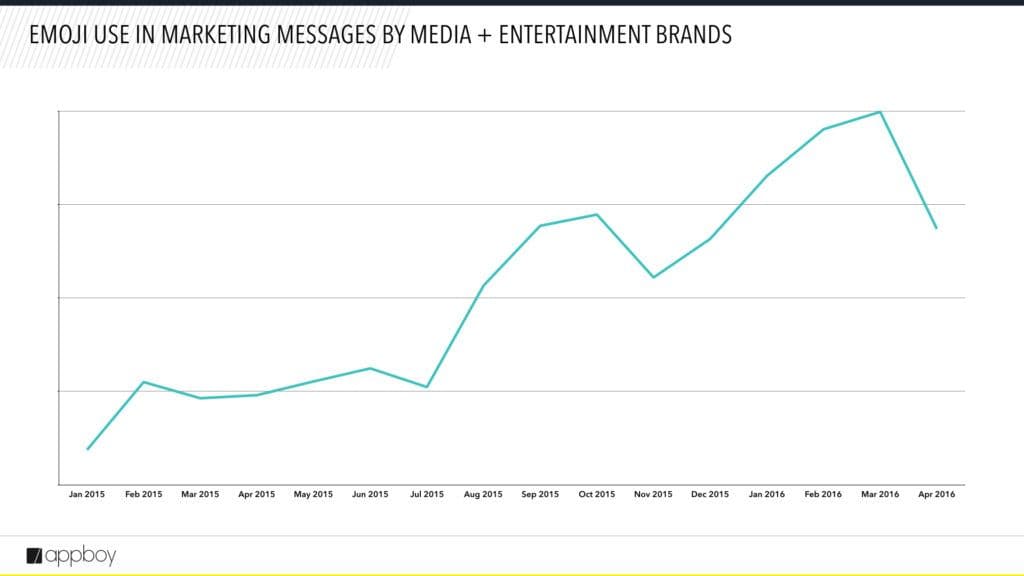
While we have no 🔮 to consult, according to Appboy’s research, emoji marketing may have seen its peak among media and entertainment marketing professionals in March 2016, with April emoji use taking a dip. AdAge cautions that customers could begin to experience emoji messaging fatigue. And Wired discusses that when companies enter the mix, there’s a natural saturation point for how many brand-driven emoji campaigns fans can or will realistically engage with.
What’s a media marketer with a love for 😂 to do?
Dos and don’ts for using emojis in marketing messaging
The bottom line is to make sure that connecting with your customers in meaningful and personal ways is always the first order of business. As you use emojis:
- Don’t forget about possible emoji fatigue and oversaturation.
- Do continue to monitor the trends.
- Don’t overuse emojis in your campaigns. How will you know what’s too much? Well:
- Do keep your ear to the ground with your feedback loops. Watch your campaign analytics, any negative reactions like decreased engagement with messages, and test and iterate.
- Do be sure that you’re using emojis (and all messaging tactics) to connect authentically and usefully with your audience.
How media and entertainment brands are using emojis in marketing now
Amidst all the emoji buzz, what marketing campaigns from media and entertainment companies and entertainers themselves stand out? Here, we’ve found some examples that offer real engagement—and in some cases, even build the opportunity to learn more about an audience.
Movies
Disney and Star Wars: The Force Awakens
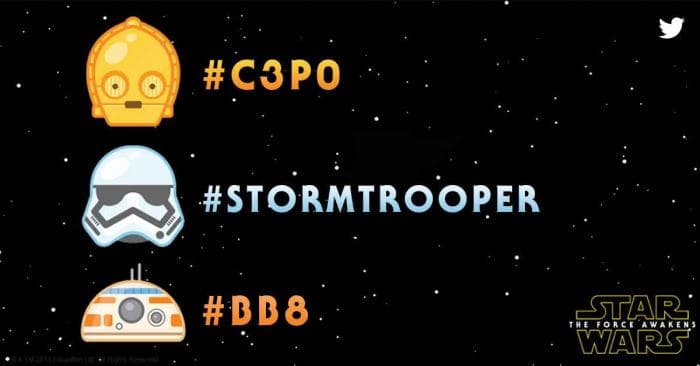
Twitter announces Star Wars emojis on their blog
Cited as one of AdAge’s “Top Ten Emoji Campaigns of 2015,” Disney and Lucasfilm partnered with Twitter to have special Star Wars-themed characters appear when people used hashtags related to the movie on Twitter. Fans in the Twitterverse, driven by the element of surprise and happily discovering the force in 140 characters or less, tweeted a peak of 17,000 tweets per minute at one point during this campaign.
Warner Bros. and How To Be Single
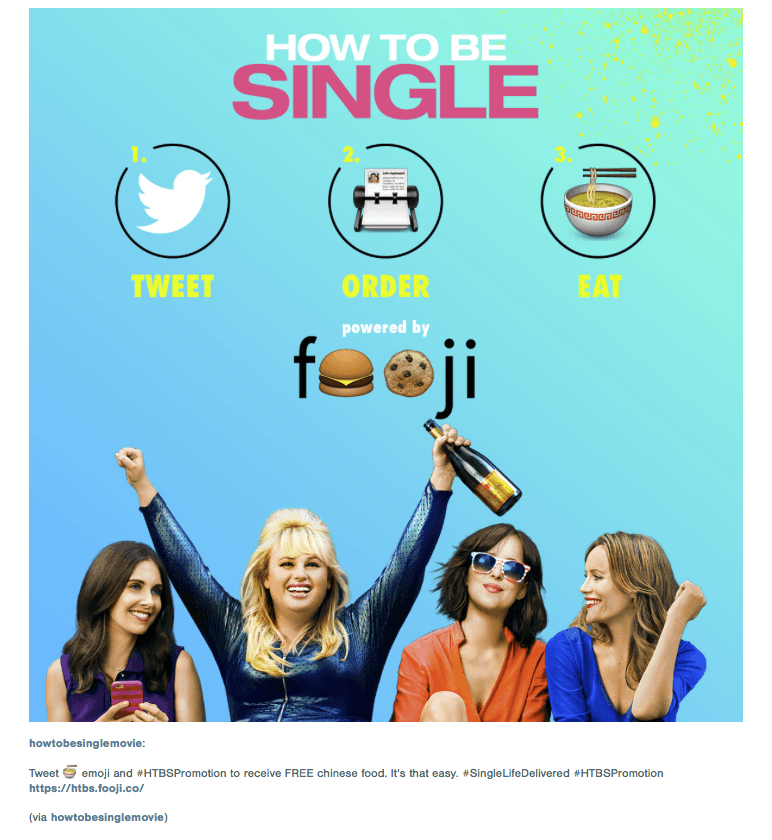
New Year’s 2016, ahead of the February release of its film How To Be Single, Warner Bros. worked with Fooji, a platform that lets fans order food via a single emoji, to promote the movie by sending free Chinese food to hungry singles on New Year’s Day. Single movie lovers got a chance at second helpings when they had the opportunity to tweet the pizza emoji to receive pizza and breadsticks.
20th Century Fox and Deadpool
This idiotic/brilliant billboard is why I’m all in on the DEADPOOL movie. I’m an easy lay. pic.twitter.com/jSRorPvaCp
— Patton Oswalt (@pattonoswalt) January 13, 2016
The team behind the February 2016 release Deadpool took the emoji marketing game to another level with this billboard that spells out the film’s title using only special—and purposefully off-color—characters. The stunt generated a ton of Twitter activity and attention, if not direct praise, from tech and advertising media outlets.
Sports
Nascar
Uhhh, MIND BLOWN.
Driver portraits… in 🐊🐔🍣: http://t.co/6MfnpjHcNs#WorldEmojiDay pic.twitter.com/JFoBs7XQCb
— NASCAR (@NASCAR) July 18, 2015
For #WorldEmojiDay, which is celebrated annually on July 17 (the date displayed on the iOS-based calendar emoji), Nascar marked the occasion by unveiling driver portraits designed entirely out of emoji.
Music
Fall Out Boy
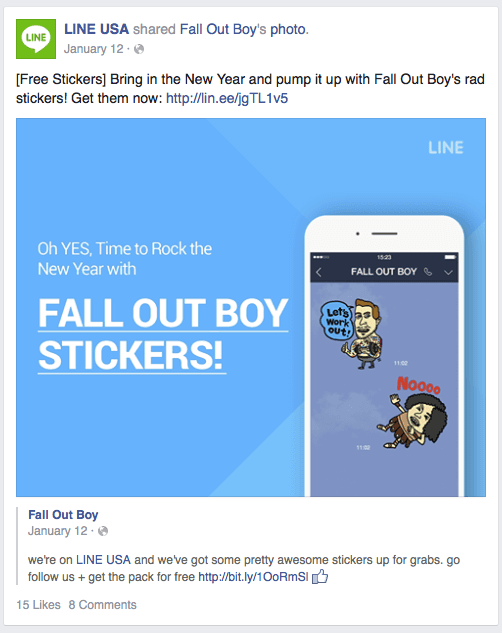
As reported by Yahoo!’s Flurry Insights, 2015 saw a tremendous growth in mobile app use, and emoji-based messaging apps and keyboards contributed to an over 332% growth in the use of personalization apps (a category which also includes lock-screen apps, for instance). As part of this trend, brands and entertainers are increasingly embracing offering their own custom emoji stickers for fans. Fall Out Boy did so earlier this year, exclusively with the growing messaging app, Line, offering 16 creative cartoons for their audience to use. And they did so by crowdsourcing fan input from Twitter and Facebook, generating thousands of comments and engagements.
Celebrities
Kim Kardashian
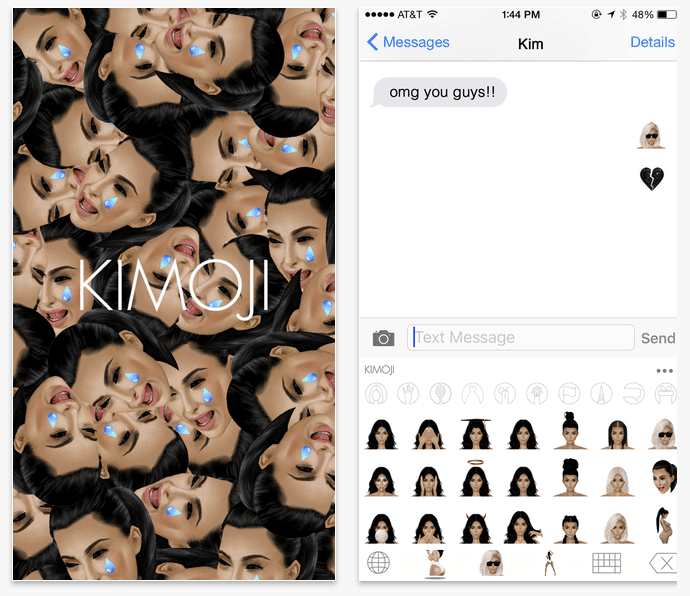
While Fall Out Boy and others in the entertainment industry are working with third-party messaging and sticker apps to release branded emoji, Kim Kardashian launched her own emoji app, appropriately named Kimoji, available in the Google Play and Apple App stores, and Fortune reports it was a top paid downloaded app in the Apple App store.
TV
Broad City, Portlandia, VH1 and More
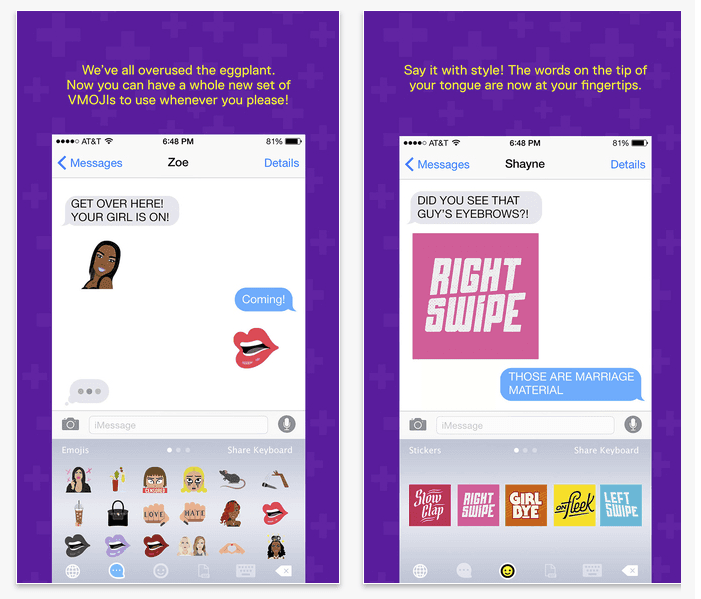
VHI’s custom VMOJI emoji keyboard
As with musicians and celebrities, TV shows and channels are also offering custom emoji sticker packages for fans. VH1 is keen on using its emoji keyboard apps to glean audience insights on which emoji are the most popular, how fans are engaging, and to develop rich user profiles based on this intel.
What now?
Media marketers wondering what’s next should focus on how customers are using and interacting with emojis. Do they respond better to communications with emojis or not? With certain emojis better than others? Test to discover what works—and what doesn’t—and you’ll grow richer customer profiles and, ultimately, further your customer relationships.
Ready to become better at marketing via emoji? Check out our blog post covering emojis in marketing campaigns.
Be Absolutely Engaging.™
Sign up for regular updates from Braze.
Related Content
View the Blog
The new inbox reality: How iOS changes are reshaping email marketing

Aparna Prasad

Experience optimization: Turning data insights into better journeys

Team Braze

December 2025 Bonfire Marketer of the Month: Jagex’s Emma Oliver
